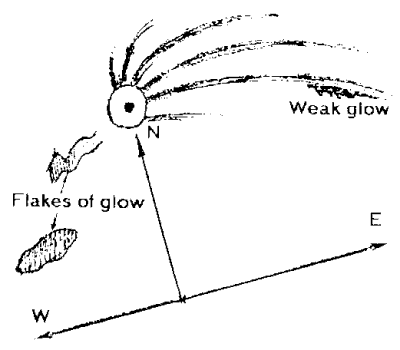 |
Science Frontiers ONLINE No. 104: Mar-Apr 1996 |
|
|
The Petrozavodsk Phenomenon
We classify this remarkable phenomenon under ASTRONOMY because in several respects it parallels some meteoric phenomena, such as the famous February 9, 1913, bolide procession that amazed inhabitants of eastern North America. Unhappily, we only have room to quote one paragraph from a 10-page report.
"General outline of the phenomenon. At night, early on the 20th of September of 1977, over a vast area in the northwest of the European part of the USSR, unusual light phenomena in the atmosphere were observed, namely formation and motion of bright, luminous bodies surrounded by extended shells and emitting light rays or jets of quaint shapes. The shells transformed and diffused within 10 to 15 minutes. Besides, a more longlived, stable glow was observed, mostly in the northeastern part of the sky. These phenomena took place during disturbances of the geomagnetic field and the upper atmosphere. Somewhere, aurora borealis was seen."
(Gindilis, L.M., and Kolpakov, Yu.K.; "The Petrozavodsk Phenomenon," RIAP Bulletin, 2:3, April-September 1995. RIAP = Research Institute of Anomalous Phenomena, P.O. Box 4684, 310022 Kharkov-22, UKRAINE)
References. The 1913 meteor procession is described in AYO7 in our catalog: The Sun and Solar System Debris. Also see: SF#79. Details on our catalog here.
 |
The Petrozavod phenomenon as seen near Lehta. |